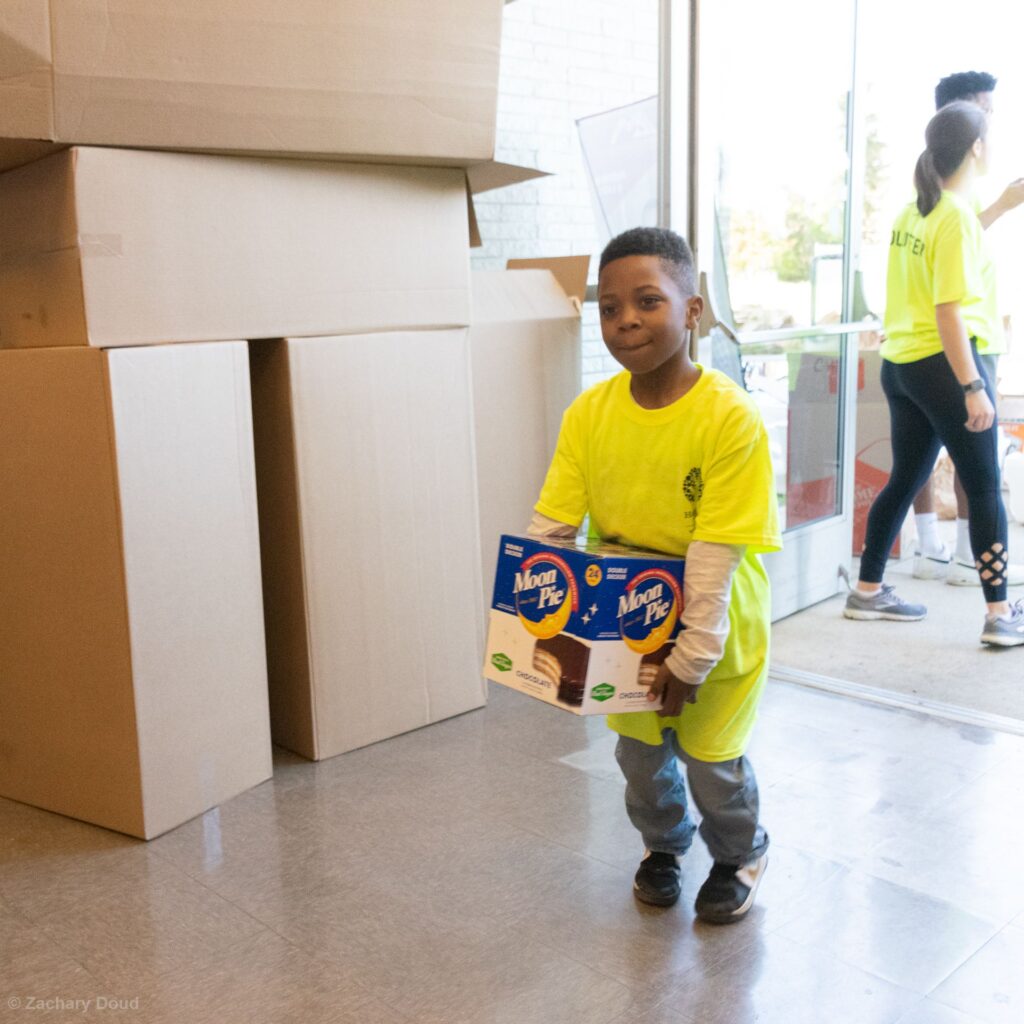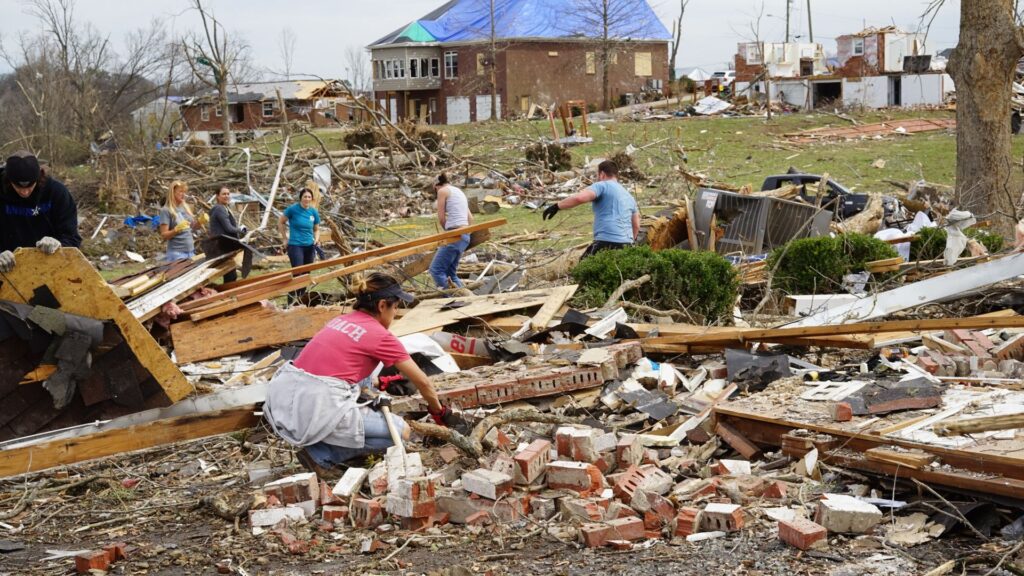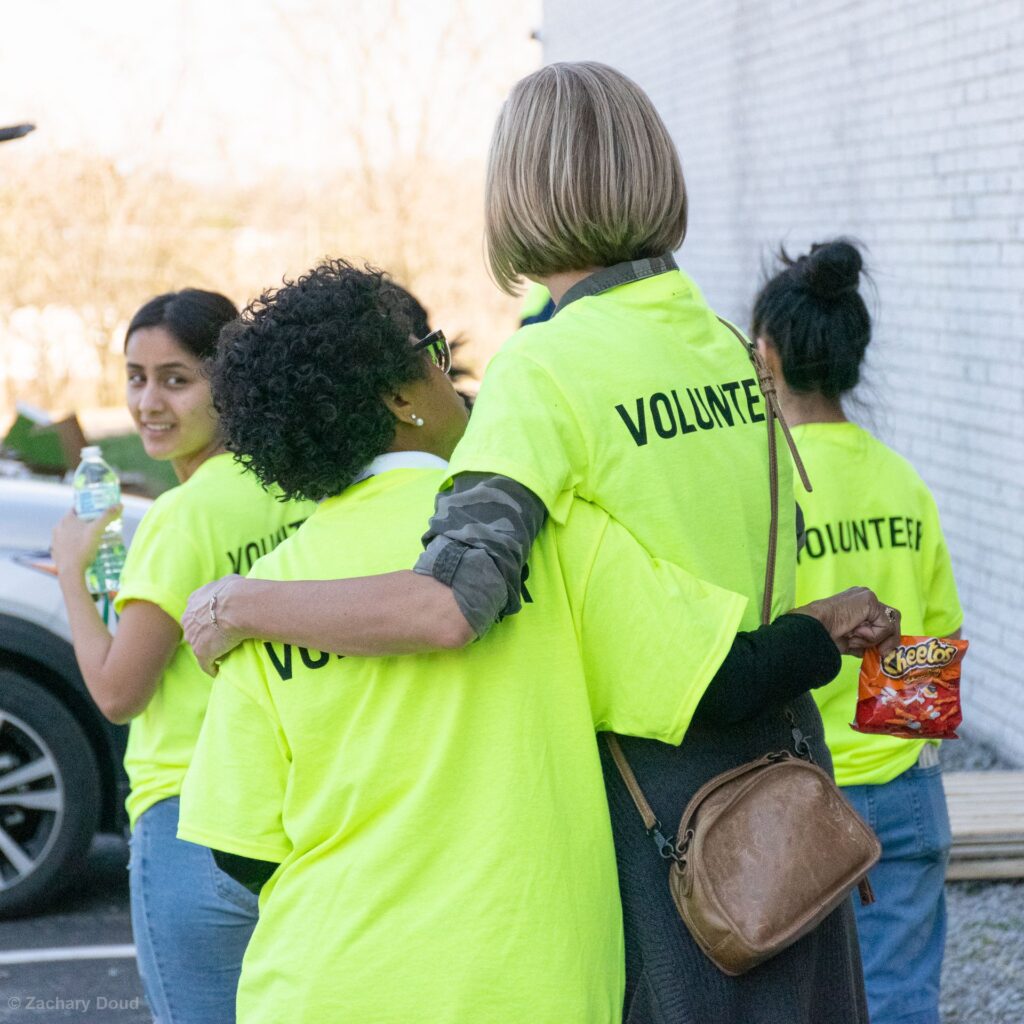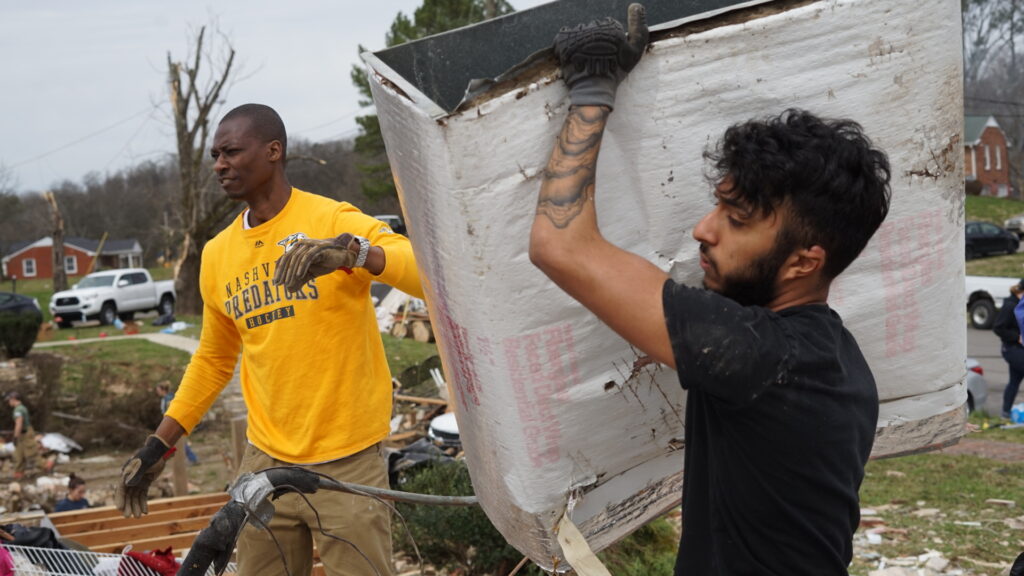UPDATED 03/01: The following story includes original reporting, as well as updated information provided by CFMT and Hands on Nashville’s director of communications, Lindsey Turner.
Founded in 1991 by Hal Cato, Hands On Nashville’s mission is to meet community needs through volunteerism. Today, HON connects thousands of volunteers of all ages to more than 300 service projects each month. The HON AmeriCorps Program is made possible through generous support from Volunteer Tennessee and The Dan and Margaret Maddox Fund. AmeriCorps is a program of the Corporation for National and Community Service, the federal agency for volunteering, service, and civic engagement. CNCS engages millions of Americans in citizen service through its AmeriCorps and Senior Corps programs and leads the nation’s volunteer and service efforts.
Hands On Nashville has received $108,000 in grants from the Middle Tennessee Emergency Response Fund at The Community Foundation of Middle Tennessee.
After Tornado Strikes, HON Leader Springs into Action for Her Donelson Neighbors
In the late hours of March 2 and early March 3, sirens went off just minutes before devastating tornadoes swept through Middle Tennessee.
Included in their wrath was the Donelson neighborhood of Nicki Avila, AmeriCorps Program Manager for the Nashville-based nonprofit Hands On Nashville.
Sirens had alerted Nashvillians many times over the years without any fatal damage, so many people assumed this night would be similar — an inconvenience, at most, Avila recalls.
This would be the real deal.
“The thunderous sound of trees centuries old being uprooted from the ground, metal and wood screaming as they are pulled from the bones of a house, and the feeling of the earth vibrating beneath my feet — the visceral feeling of being totally out of control — I called my friend to tell him where we were in the basement in case they needed to find our bodies among the debris,” Avila says.
“When everything finally stood still, we realized our house had been mostly untouched,” she continues. “My dad and I left the cover of the basement and brought flashlights out into the front yard. Beyond the barrel of the tree laying in front of us, we saw chaos — and our neighbors were somewhere in it.”
Her disaster-relief training kicked in.
“House by flattened house, we ran to what was left, calling ‘Anyone in there?’ through broken windows, clearing debris, and helping guide neighbors into the street where power lines sparked and the smell of gas filled the air,” Avila recalls. “Other neighbors joined in; you could hear people calling out, The Johnsons are OK! ‘I need help over here!’ ‘Where’s Theresa?’
A police officer asked if her house was safe enough for all these people to go inside.
“Another tornado may be heading through. We need everyone off the street now!” the officer implored.
Firefighters, neighbors, police officers, and children were now escorting people into the shelter of her home.
“Fifteen of us waited an hour or two until it was just rain, or until relatives came to pick up their family — one family slept on my couch until dawn,” Avila says.
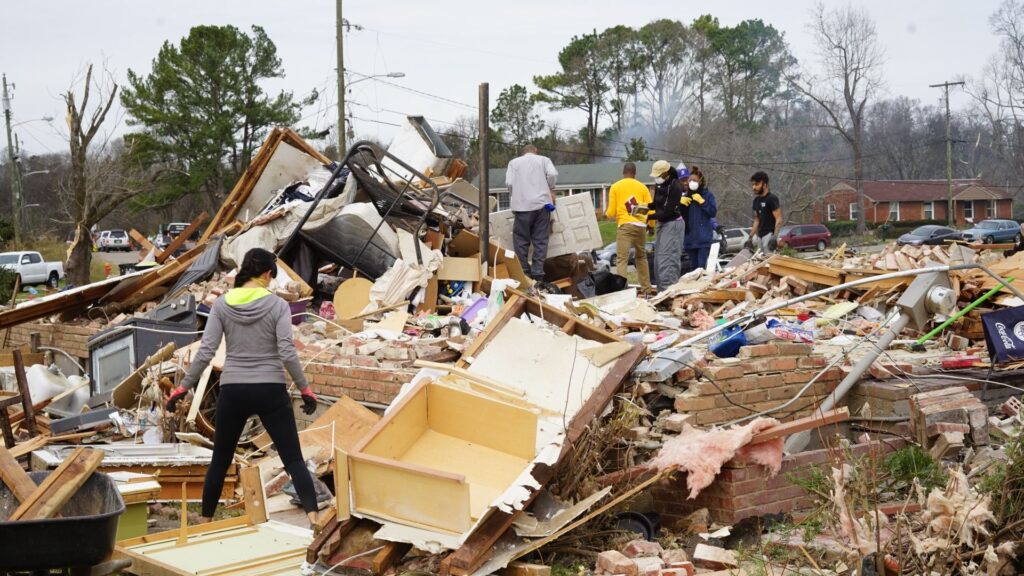
In the days to come, more than 7,000 volunteers would show up, tools in hand, ready to help the neighborhood move forward.
Because of her work for Hands On Nashville, “mixed with a bit of survivor’s guilt and a skillset of being calm under pressure,” she says, Avila set up a volunteer tent in her front yard. With her family, she began to try and assess the needs of the neighborhood and assign projects to the flood of incoming helpers.
Trees were chopped.
Branches were cleared.
Bricks were stacked.
Splinters that were once beautiful homes were moved to the edge of the road.
Community members, businesses, and organizations from around the city mobilized to give their love and whatever else they could,” Avila says.
“I feel lucky to have been working at Hands On Nashville, to have access to the resources needed to organize, and friends back in the office moving mountains day and night to support the effort,” she continues. “It takes a village, and a village Nashville was.”
In her neighborhood today, more than four months after the tornado, she hears nails being driven into wood as houses are starting to be rebuilt.
“Neighbors ride their bikes and walk hand in hand,” Avila says. “admiring the progress, remembering ‘before,’ wondering how our piece of Donelson will look in another year.
“Hoping that they’ll finally be back home.”
Lindsey Turner, Director of Communications for Hands On Nashville, answered questions from The Community Foundation
CFMT: How have you been utilizing the tornado emergency response grant or grants?
HON: The Hands On Nashville team shifted into overdrive in the aftermath of the March 3 tornado. We deployed chainsaw crews, arborists, tarp teams, roofers, and debris-clearing volunteers; trained and deployed a cohort of volunteer leaders and AmeriCorps members across the city to assess needs and lead and assist with cleanup, canvassing, and distribution efforts; fielded thousands of phone calls, emails, social media messages, walk-in requests, and more; and directed donated meals to where they could be most impactful. HON also improved volunteer coordination with emergency officials by securing volunteer transportation into affected areas, broadcasting safety information, and directing volunteers to areas that had been cleared by the city’s Office of Emergency Management.
HON uses CFMT grant funds to pay the overtime and staff salaries for tornado-recovery activities. Additionally, HON used funds to purchase materials and supplies to set up an essential-item distribution center in Hermitage, where volunteers sorted and gave away food, water, household goods, and more to residents whose homes had been damaged or destroyed.
When COVID-19 gained a foothold in Middle Tennessee, HON paused tornado cleanup projects. As the city works through the phases of reopening, HON is resuming leading and recruiting volunteers for citywide tornado-cleanup projects in collaboration with Metro Nashville’s hubNashville reporting apparatus. CFMT funding is supporting the staff time and supplies needed for HON to lead volunteers in cleanup projects for potentially hundreds of residents.
HON ran into some significant technical challenges with our website in the immediate aftermath of the tornado, and are looking at using some grant funds to improve our website, database, and other tech infrastructure that will allow us to be even more responsive to ongoing disaster-related needs, and in the aftermath of any future disaster.
CFMT: In light of changes in how we all live and work due to the COVID-19 coronavirus, how has your organization managed to work in supporting tornado relief and recovery efforts? What challenges have you all overcome or are overcoming?
HON: Our organization was in the middle of tornado response, where we had a record number of people come out to help with cleanup and canvassing, when COVID shut that work down. We went from a surge of nearly 30,000 people saying they wanted to help in one week to people being told to stay at home as much as they could. That shift felt a bit like whiplash.
Our own staff shifted to remote work on March 16 and that came with its own organizational challenges, as we had to navigate new technologies and workflows. Our staff members caring for children or other family members had to navigate the same challenges that so many others have — suddenly the support systems of schools and care facilities were gone, and people were left to juggle competing responsibilities.
When the mayor initiated the Safer At Home order, HON moved toward only recruiting for volunteers to meet critical needs — things like food and shelter and COVID testing support (the drive-thru assessment centers and COVID hotline). We instituted an attendance cap on projects to ensure they could meet social distancing guidelines, first at 10 people when we were in Phase One, and then 25 people in Phase Two and in our brief foray into Phase Three. We asked people in high-risk populations to refrain from attending in-person volunteer projects. We realized that safety was a big concern for volunteers, so we started asking every volunteer to let us know if they felt unsafe at a project so we could follow up with our partners.
We saw a big drop-off in volunteers in April and May, as people began staying at home. In June we surveyed volunteers to gauge their attitudes about volunteering during the pandemic, and what we found is that people reported an increased desire to volunteer due to the effects of the tornado, the pandemic, and efforts around social and racial justice that intensified over the summer, but that people are understandably worried about increasing their exposure risk. Especially volunteers who are in high-risk categories — 65-plus, or immunocompromised.
So, while we have tried to keep our focus mainly on recruiting volunteers to meet critical needs — to support food and essential item distribution, COVID testing, mask making and distribution, etc. — HON continues to work with our partners to carve out opportunities for socially distanced volunteering. Evolving how volunteerism looks during this time — computer-based, car-based, etc. — is one thing that is constantly on our minds.
We’ve also tried to put a renewed emphasis on volunteering among our own staff, and several of our staff members and AmeriCorps have deployed into the community to help fill volunteer gaps.
CFMT: Give a favorite example or two of your staffers or volunteers stepping up to make a difference to help people through these disasters?
HON: There’s Jessa Tremblay, an AmeriCorps member serving at Plant the Seed, who HON activated as a volunteer leader. She came to the HON office and captained the volunteer leaders, communicating with them about where they needed to go, what their tasks were, and more. Her great communication and organizational skills made her truly indispensable to the HON team as we deployed dozens and dozens of volunteer leaders across the city, sometimes to multiple sites in a day, and they passed along information to Jessa that helped our team strategize where and how best volunteers and volunteer leaders could help support recovery efforts across the city.
CFMT: In terms of tornado relief and recovery, what needs remain in your community or communities?
HON: There is still debris cleanup to be done, and we are beginning to get a better idea of the volume of that now that we have resumed cleanup projects. We also are moving into the phase of home repair and rebuilding, and volunteers will be able to support that to a certain degree.
Needs related to tornado recovery intersect with needs related to COVID-19 when it comes to housing and food security. Many people who were displaced by the tornado are still struggling to find housing. People who have secured housing might be having trouble paying rent due to lower employment rates. Food banks are seeing an increased demand as people who have never before had to ask for help are needing to.
We anticipate seeing the need for volunteer help to continue to grow as the community’s needs expand.
CFMT: Define the word “hope” for you and your organization.
HON: There’s a famous Mr. Rogers quote about in times of distress, looking for the helpers. That’s because helpers represent hope. Volunteers are the people who step up to make the world a better place — by doing the necessary work, by providing aid and comfort, by saying, “You matter, and that’s why I’m here.”
At Hands On Nashville, we take that role very seriously. We know that volunteers are an important part of how our community will get through this tough time together, because they give us hope.
Follow up with Lindsey Turner, Director of Communications, Hands On Nashville (HON)
CFMT: From your organization’s perspective, what progress has been made since the March 2020 tornadoes, and what more still needs to be done for survivors?
HON: Since last spring, Hands On Nashville volunteers have assisted with two canvassing events to help get the word out about how to get into case management via Tornado Recovery Connection.
Volunteers continued to help with debris cleanup over the summer, fall and winter. We estimate that 90 to 95 percent of debris work is now done, including a lot of work that required skilled heavy machine operators.
HON volunteers have also supported efforts at the Community Resource Center to provide care kits for survivors. And volunteers have been assisting several organizations’ food distribution efforts for tornado survivors as well as those whose lives have been affected by COVID-19.
Now HON volunteers are helping move items in and out of survivors’ homes as they get repaired and rebuilt. As construction partners lead rebuilding and repair efforts, we continue to look for ways volunteers can support the recovery process. We estimate that there are still around 250 parcels where we are not sure whether they are getting assistance.
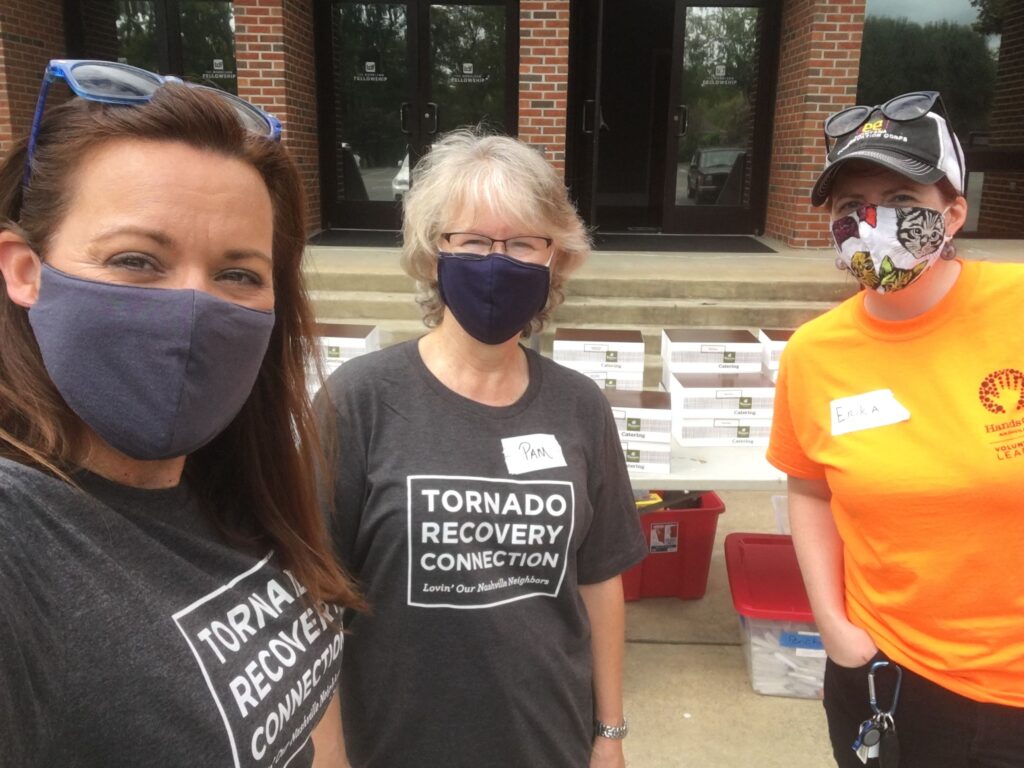
Learn more about Hands On Nashville
Online at www.HON.org
